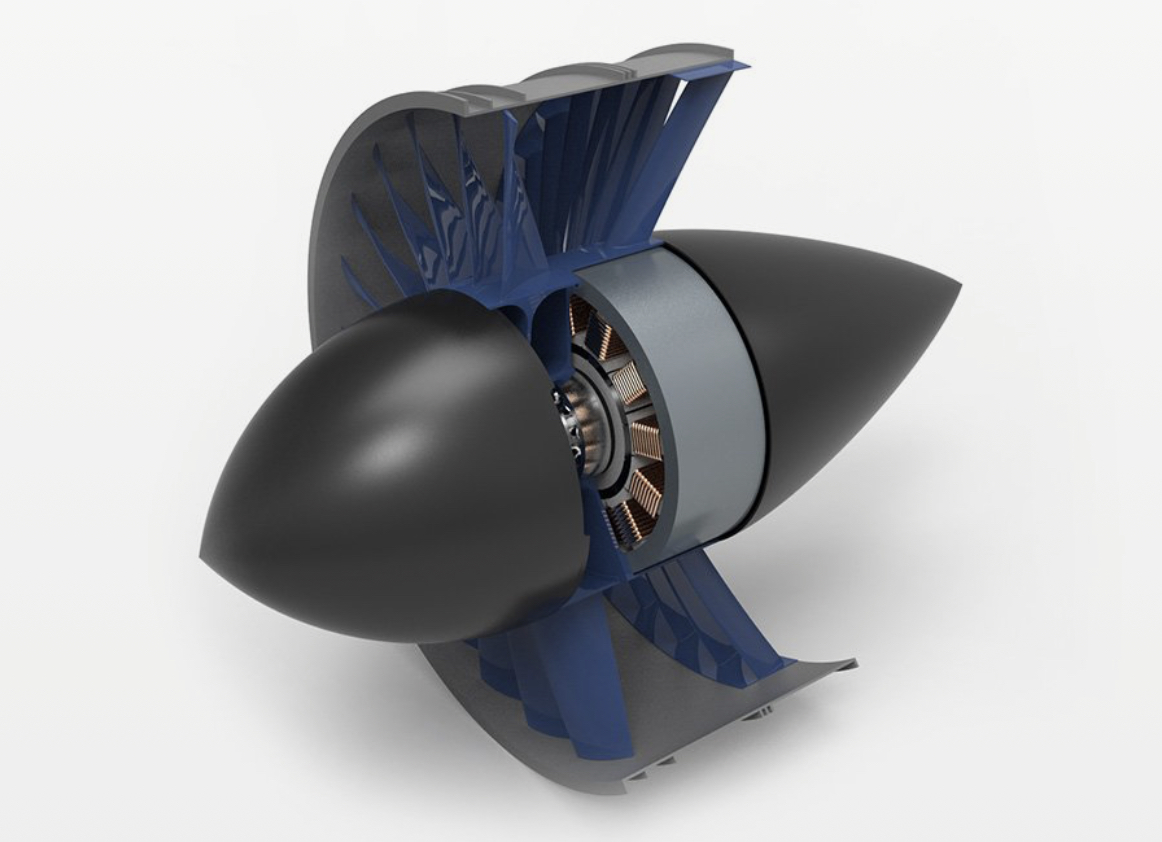Commercial Aviation is on the brink of the biggest revolution since the start of the Jet Age. This revolution is based on new technology and aircraft designs enabled by advances in hybrid electric jet propulsion. The combination of electrical engines powered by efficient Jet-A-burning power units is holding out the promise of cleaner, cheaper commercial flight. If we embrace the new technology and build the new infrastructure required, commercial aviation can be transformed into the most environmentally efficient way of transporting people internationally on the planet.

This aviation technology revolution is desperately needed. Global air traffic (domestic and international) is projected to double by 2037 to 8.2 billion air travelers. That growth could support 100 million jobs globally. But with current technology that growth comes with a price – increased greenhouse gas emissions (Carbon Dioxide — CO2). Commercial aviation currently accounts for approximately 2% of global CO2 emissions with international travel accounting for 1.3%. In the absence of any action by the aviation industry or government intervention, the doubling of air travel would mean the doubling of the industry’s CO2 emissions.
The International Civil Aviation Organization (ICAO) and its member states have made a major commitment to tackle increased emissions generated by air travel growth. The program is called “Carbon Offsetting and Reduction Scheme for International Aviation (CORSIA)”. The goal of CORSIA is to deliver carbon- neutral growth from January 1, 2020 onward. The industry is not going to prevent people from flying. The industry’s infrastructure, the tens of thousands of aircraft, can’t be instantly changed, and the hybrid electric technology to dramatically improve aircraft emission performance is still being developed. So how is ICAO going to achieve carbon-neutral growth?
While continuing its push for more efficient aircraft, CORSIA members will purchase carbon offsets e.g. carbon credits, and they will invest in other industries’ project targeting CO2 emissions. Initially, the early phases of the CORSIA program are aspirational and the carbon offsetting program will be voluntary. This recognizes that ICAO members have work to do to quantify the issues and build their respective programs in the pilot phase. However, with 75% of ICAO membership already in agreement, CORSIA becomes mandatory in Phase 2 (2027-2035).
The CORSIA CO2 reduction targets are substantive. ICAO projects that by 2035, CORSIA must reduce or offset emissions by at least 443 megatonnes of CO2 per year in order to achieve carbon-neutral air travel growth. The worst- case scenario would require an annual reduction of 596 megatonnes. ICAO’s member states will spend billions of dollars annually to achieve the CORSIA objectives.
By 2035, the cost is estimated to be 0.5% to 1.4% of total international aviation revenues. At this point the hybrid electric propulsion technology is expected to be commercially operational in business and regional jets. Opening in 2028, Pickering Airport will provide the infrastructure and runway capacity to support the new clean technology.
To better understand the scale of the CORSIA reductions, let’s compare them to the country of Canada. In 2016, Canada’s total CO2 missions were 704 megatonnes and represented 1.7% of global CO2 emissions. Canada’s commitment to the Paris Agreement is to reduce its emissions to 30% below its 2005 level by 2030. Canada’s 2005 emissions were 732 megatonnes and therefore the Paris Agreement commitment translates to a reduction of 220 megatonnes in 2030.
ICAO’s CORSIA target for 2035 is at least twice Canada’s 2030 commitment. CORSIA’s lowest CO2 reduction target is equivalent to 63% of Canada’s total 2016 emissions. Let’s clear up a misconception regarding CORSIA and the Paris Agreement. Domestic aviation emissions are within the scope of the Paris Agreement, and therefore subject to action by the agreement’s parties. ICAO CORSIA addresses international aviation emissions and the targeted reductions are in addition to the Paris Agreement.
ICAO’s CORSIA program is a significant commitment to mitigating climate change. This goal deserves our support as does the development of new aviation infrastructure, such as the new Pickering airport. In a phenomenon called the infrastructure paradox, Pickering’s new airport will reduce overall emissions by saving fuel needlessly burned due to congestion at nearby Pearson Airport. Pearson handles 30% of all Canadian passenger traffic and its increasing congestion is a source of emissions concern. By providing local, accessible aviation capacity, Pickering Airport will reduce fuel burned and time wasted by millions of passengers commuting to Pearson, Hamilton and even Buffalo airports.
Pickering airport will have the room to be able to build fueling infrastructure for sustainable alternative fuels including biofuel. Uptake of Biofuels in aviation is slow, with only two airports in the world—Oslo and Los Angeles—offering biofuels to airlines as a regular service. Most importantly it will have the runway capacity to support high-frequency operations of the new regional hybrid jets (50-100 seats).
Instead of growth denial, CORSIA embraces growth. Together with new aviation infrastructure in Pickering, the Toronto region can embrace both its booming population growth and reduce its carbon footprint. Toronto’s growth can continue into a bright future where aviation is the most environmentally efficient mode of international transport imaginable.
Data Sources:
International Civil Aviation Organization
4 thoughts on “Pickering Airport and CORSIA – Opening the door to a clean aviation economy.”
Comments are closed.